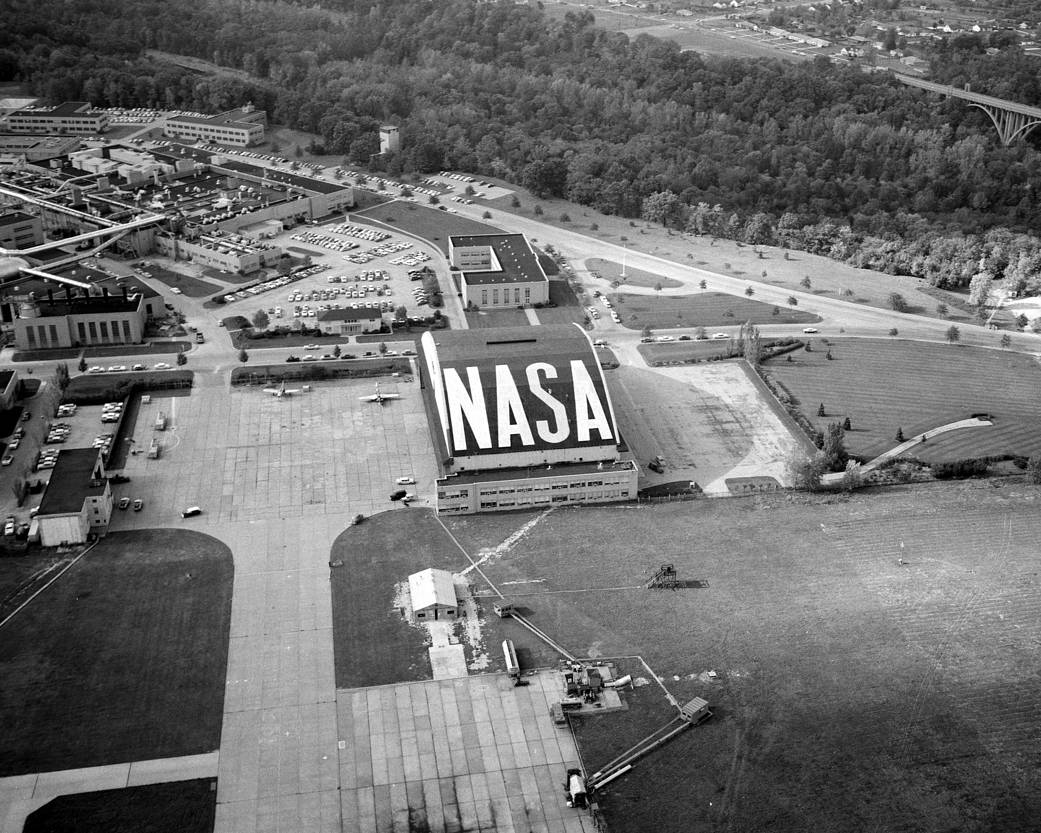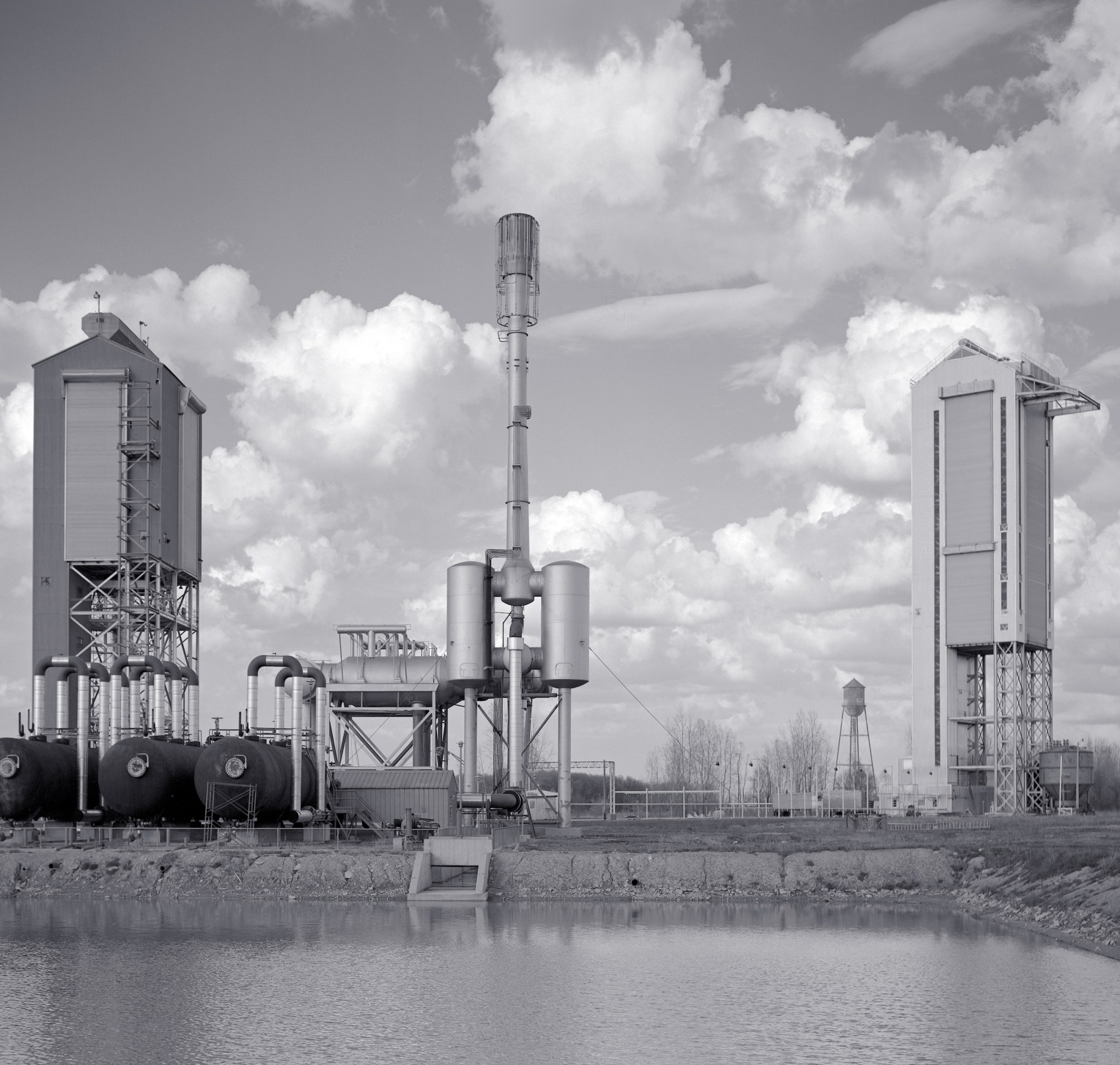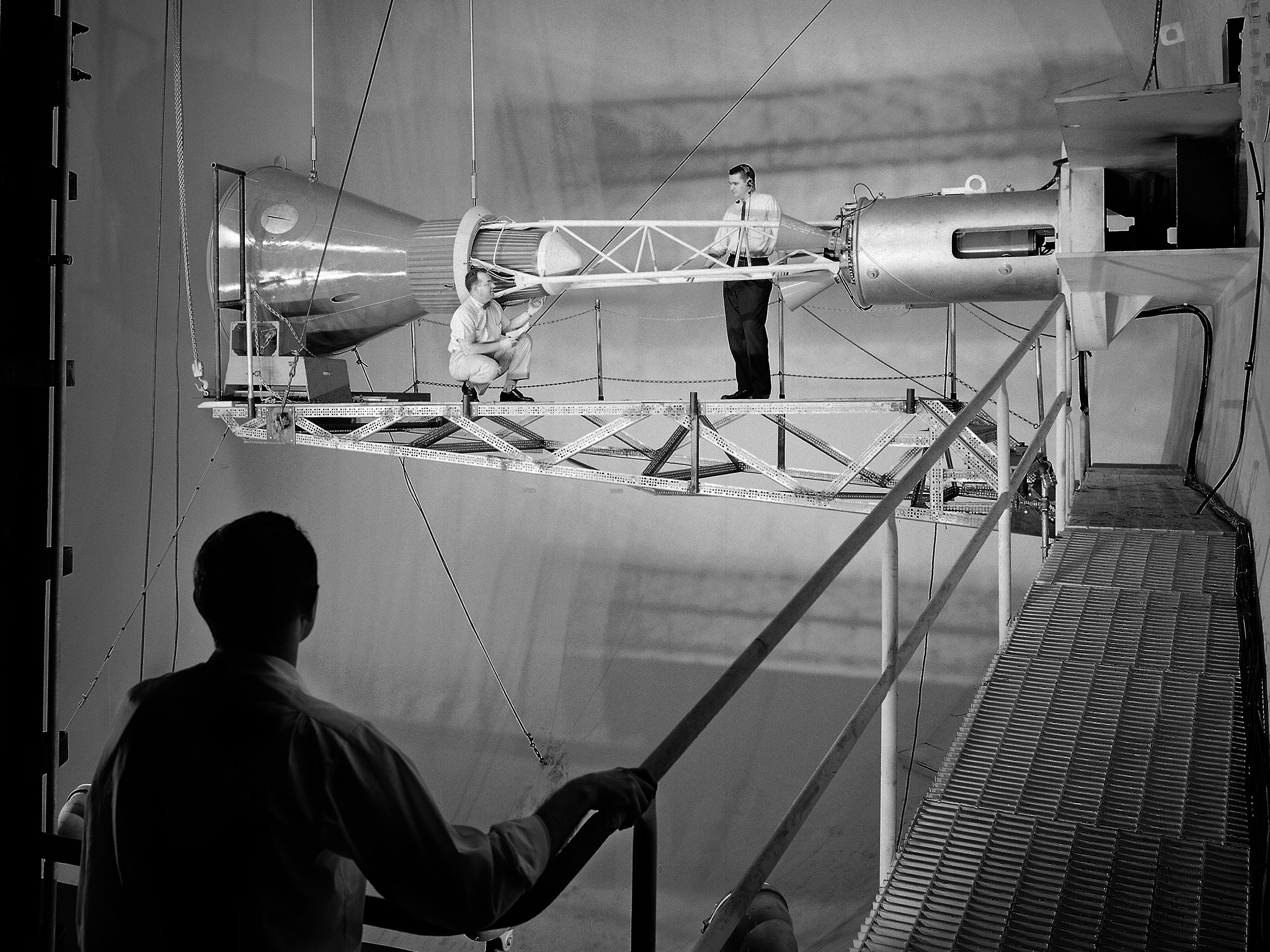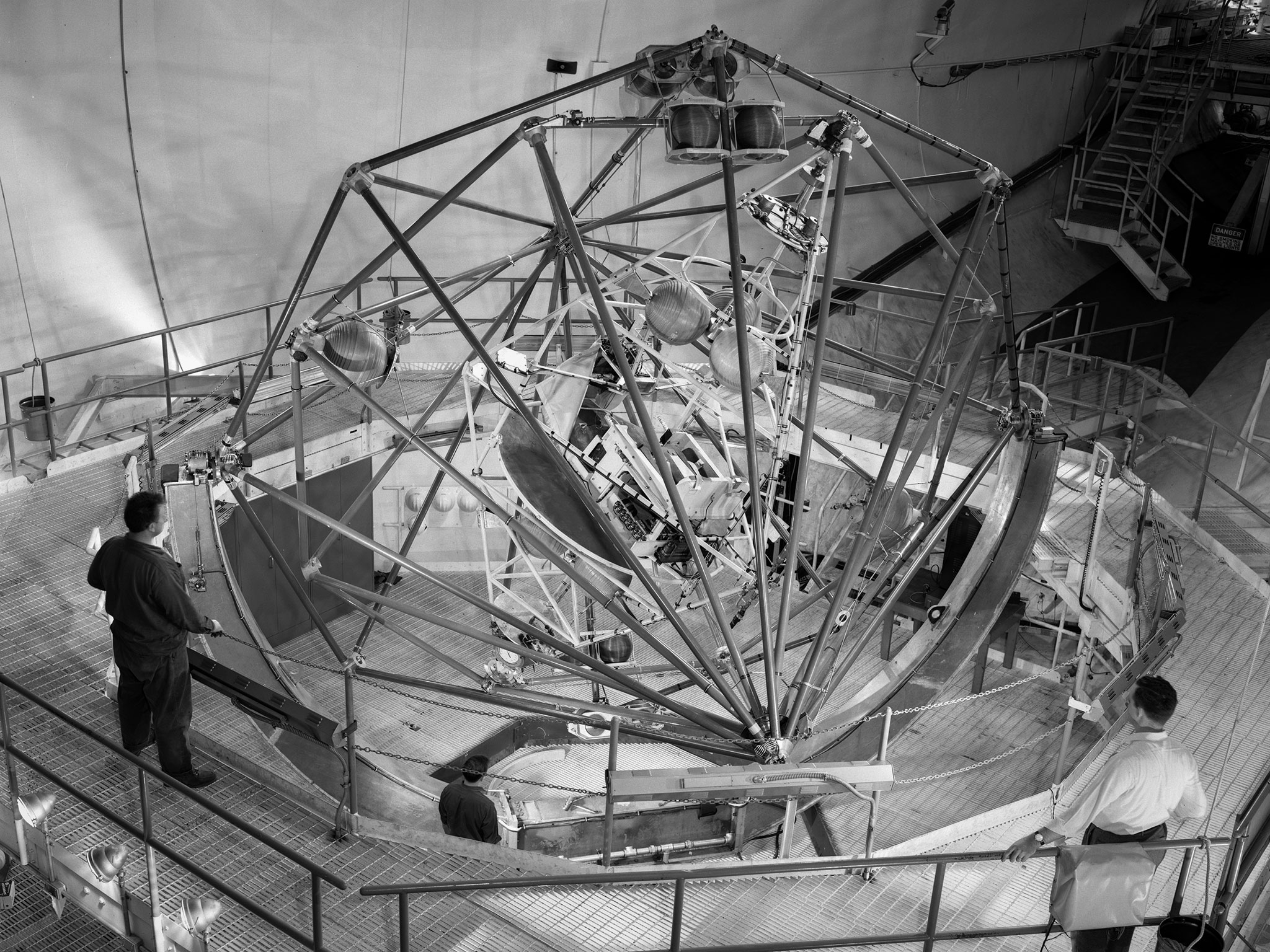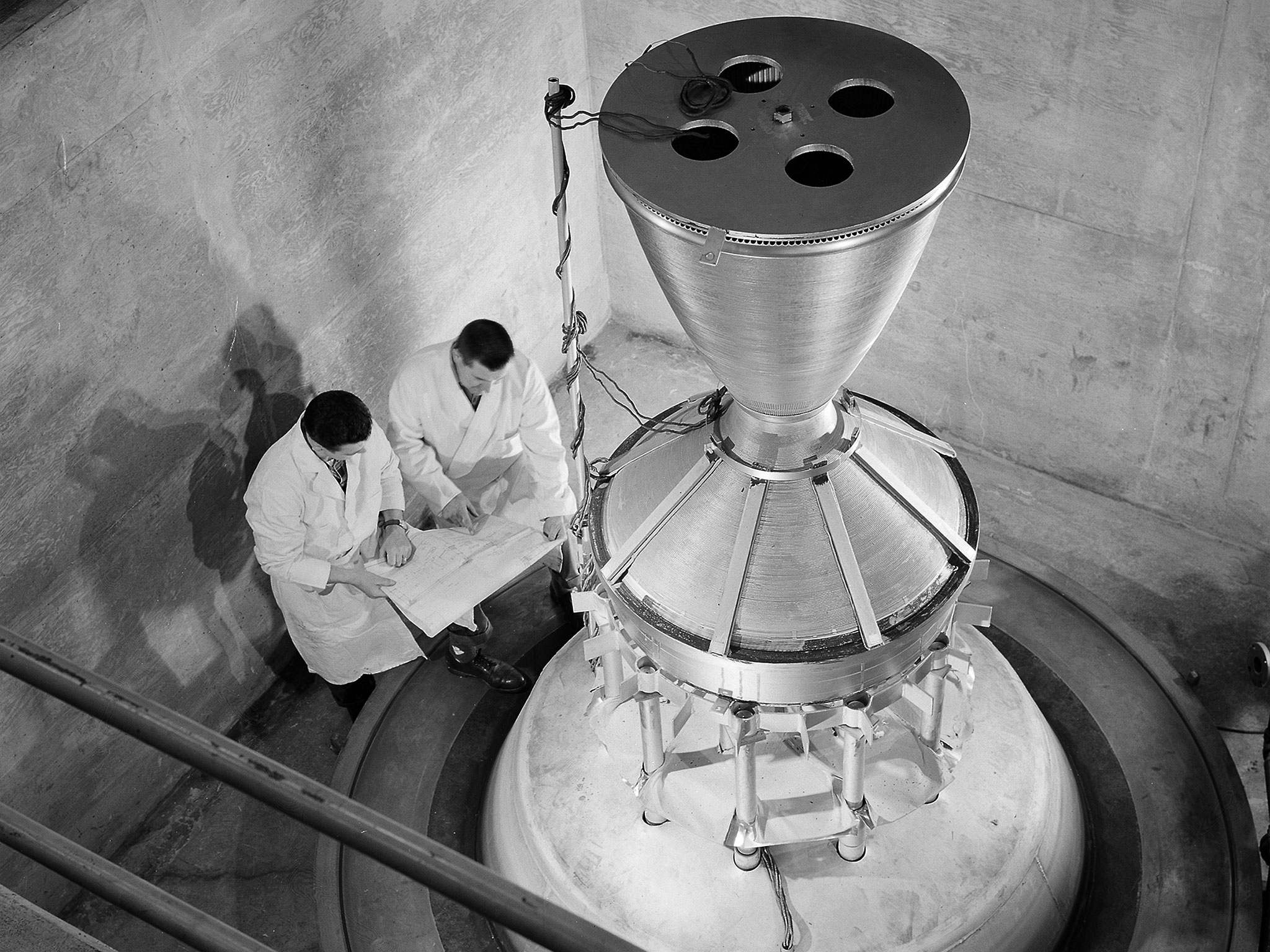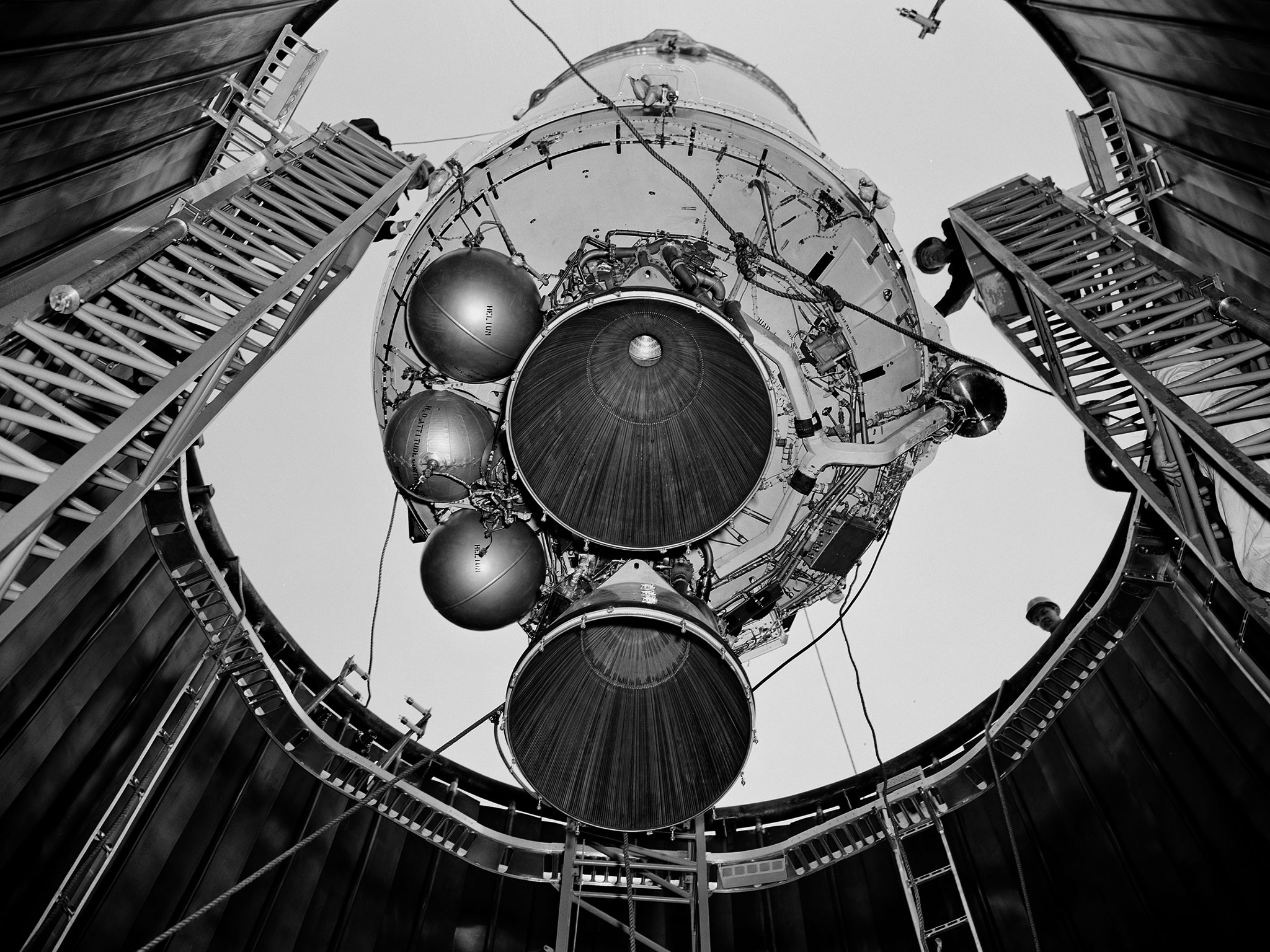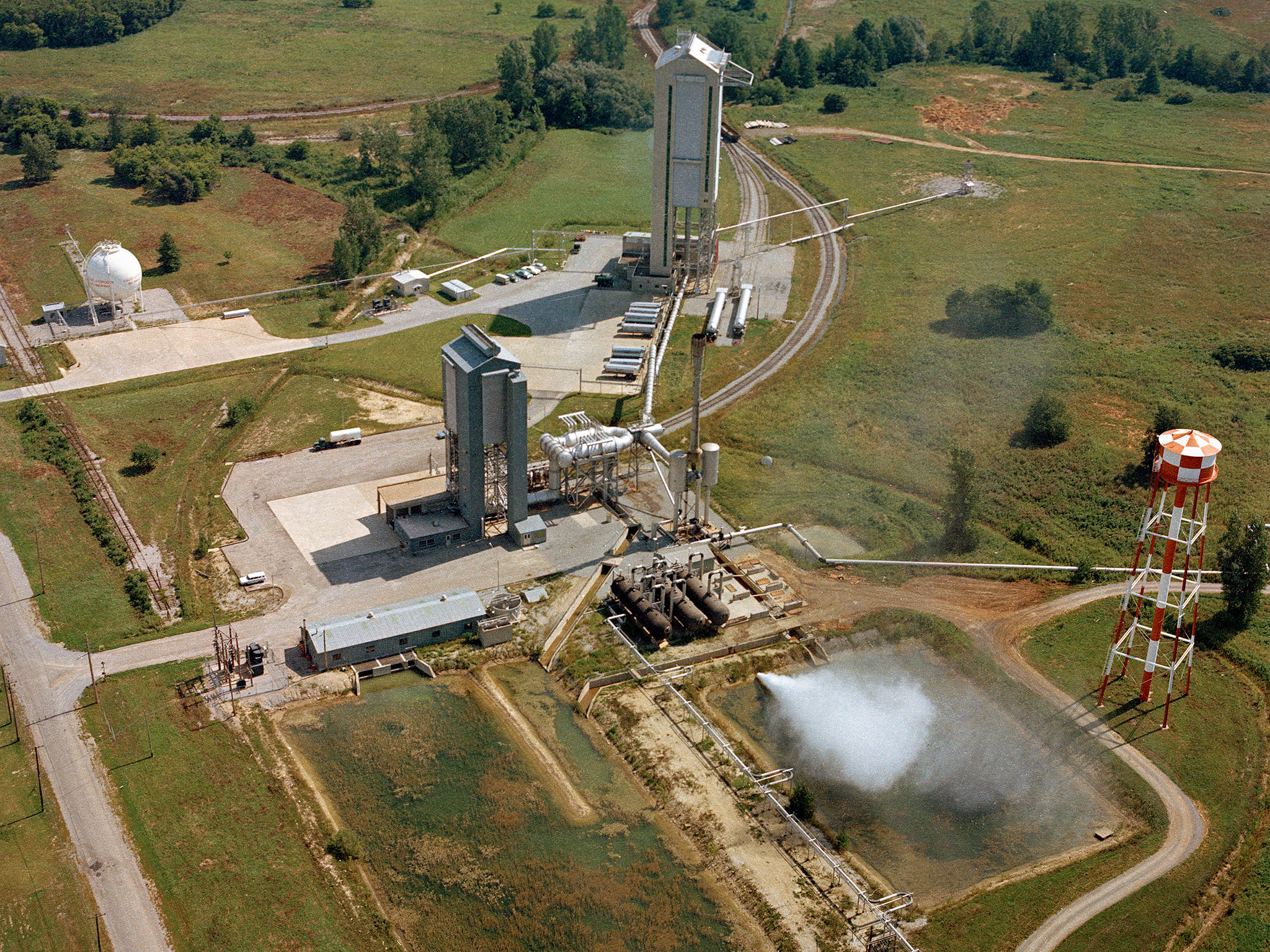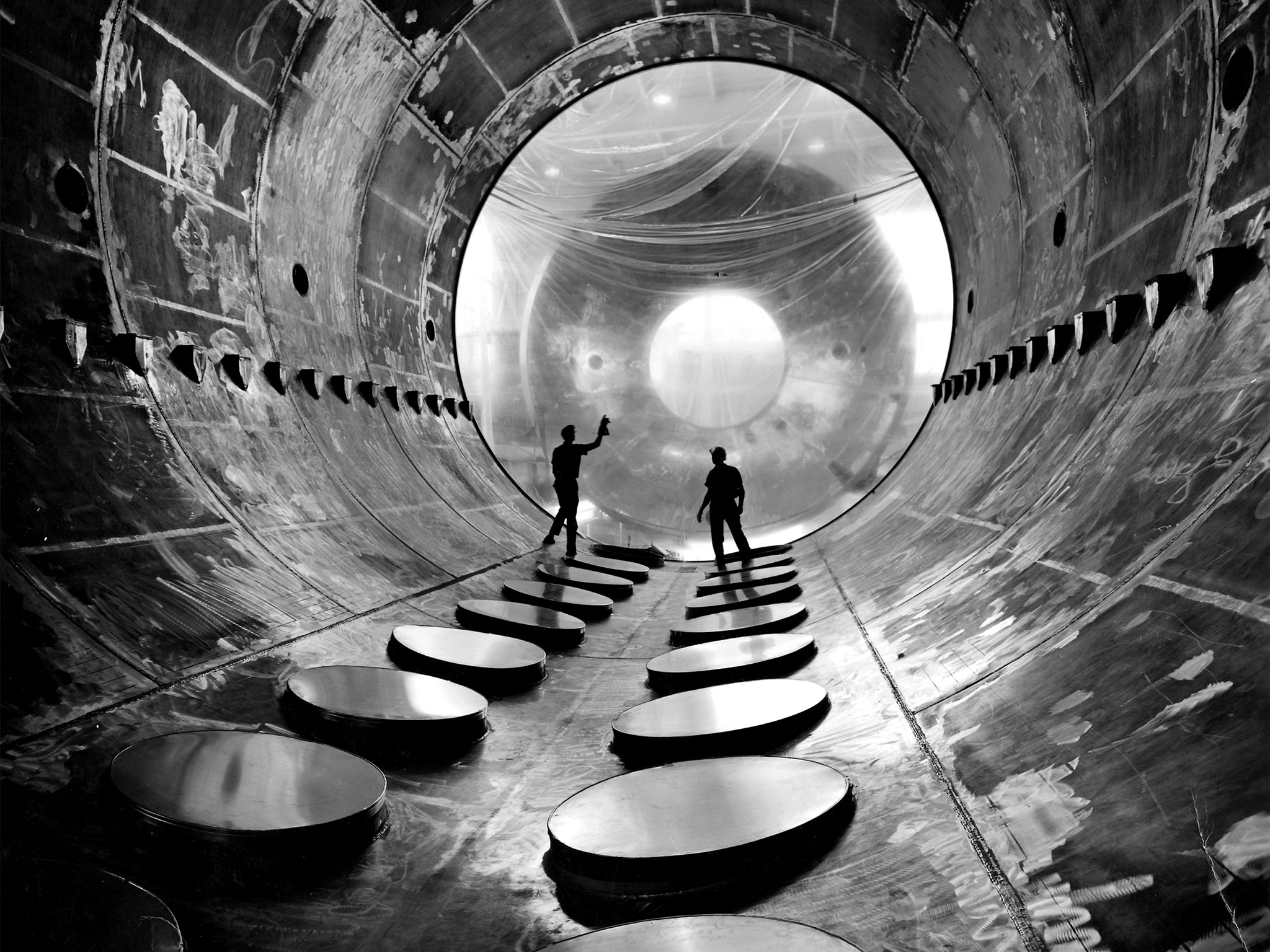The Lewis lab and its staff were critical to the NACA’s transition to NASA in 1958. Lewis’ work on liquid hydrogen and chemical rockets expanded in the early-1960s. The center also took on new efforts involving nuclear rockets, space power generation, electric propulsion, and the Centaur rocket.
Birth of NASA
On October 1, 1958, the laboratory officially became part of the new NASA space agency and was renamed the Lewis Research Center. In the spring of 1958, Abe Silverstein was transferred to Headquarters where he helped set up the new agency and plan its initial programs. Silverstein brought a number of key Lewis managers with him, including George Low. Silverstein successfully advocated for the use of liquid hydrogen in NASA upper stage rockets and named the Mercury and Apollo Programs.
George Low Spurred Moon Landings
Expansion of the Center 1958
In 1958 the center began acquiring additional property and converting its facilities to focus on space-related research. The expansion included to 115-acre West Area and an additional 3,100 acres at Plum Brook. The center also used 23 acres north of the campus to construction the Development Engineering Building.
Rocket Systems Area at Plum Brook
Project Mercury Testing
NASA Lewis made several key contributions to NASA’s first human space mission, Project Mercury. In 1959, the center designed the instrumentation and assembled capsule for the Big Joe launch. The center also modified its Altitude Wind Tunnel so that additional Mercury tests could be conducted inside its return leg. The capsule’s retrorockets, posigrade rockets, and escape tower rockets were also test inside the AWT in 1960.
Astronaut Training
In 1959 Lewis engineers modified a device inside the AWT designed to test the Mercury capsule’s attitude control so astronauts could train on controlling a tumbling spacecraft. This Multi Axis Spin Test Inertia Facility (MASTIF) could rotate in along three axis simultaneously. In early 1960, all seven Mercury astronauts visited the center to learn how to bring the device, referred to as the Gimbal Rig, under control.
Nuclear Rocket Program
NASA and the Atomic Energy Commission (AEC) initiated the NERVA program in 1961 to develop nuclear rockets for long-duration missions. Lewis was responsible for developing the liquid-hydrogen fuel system, while the AEC designed the reactor and engine. The center conducted extensive hydrogen system testing at Plum Brook’s Rocket Systems Area while analyzing radiation effects on materials in the Plum Brook Reactor.
Centaur Rocket Program
The Centaur rocket program was transferred to Lewis in September 1962. The first launch attempt of the new upper-stage rocket, which was the first to use liquid hydrogen as a propellant, had recently failed. Lewis’ extensive analysis included full-scale structural tests at Plum Brook, space environment and shroud jettison testing at the Space Power Chambers, and an array of engine, propellant tank, and pumping tests. Centaur emerged as an extremely reliable vehicle and Lewis became known for their launch vehicle expertise.
Plum Brook Station
In March 1963, NASA formally acquired Plum Brook Station. NASA had previously leased portions of the facility for its test reactor and the Rocket Systems Area—both of which were in full operation by 1963. After the acquisition, NASA began constructing larger facilities such as the Space Power Facility, Space Propulsion Research Facility, Cryogenic Tank Facility, and Hypersonic Tunnel Facility.
Electric Propulsion
In 1961, the center completed the Electric Propulsion Laboratory (EPL) to support its nascent electromagnetic propulsion work. The EPL’s large vacuum chambers were essential to testing the new electronic bombardment ion thruster developed by Harold Kaufman. In 1964 the thruster was successfully demonstrated on the Space Electric Rocket Test (SERT I) spacecraft.




























